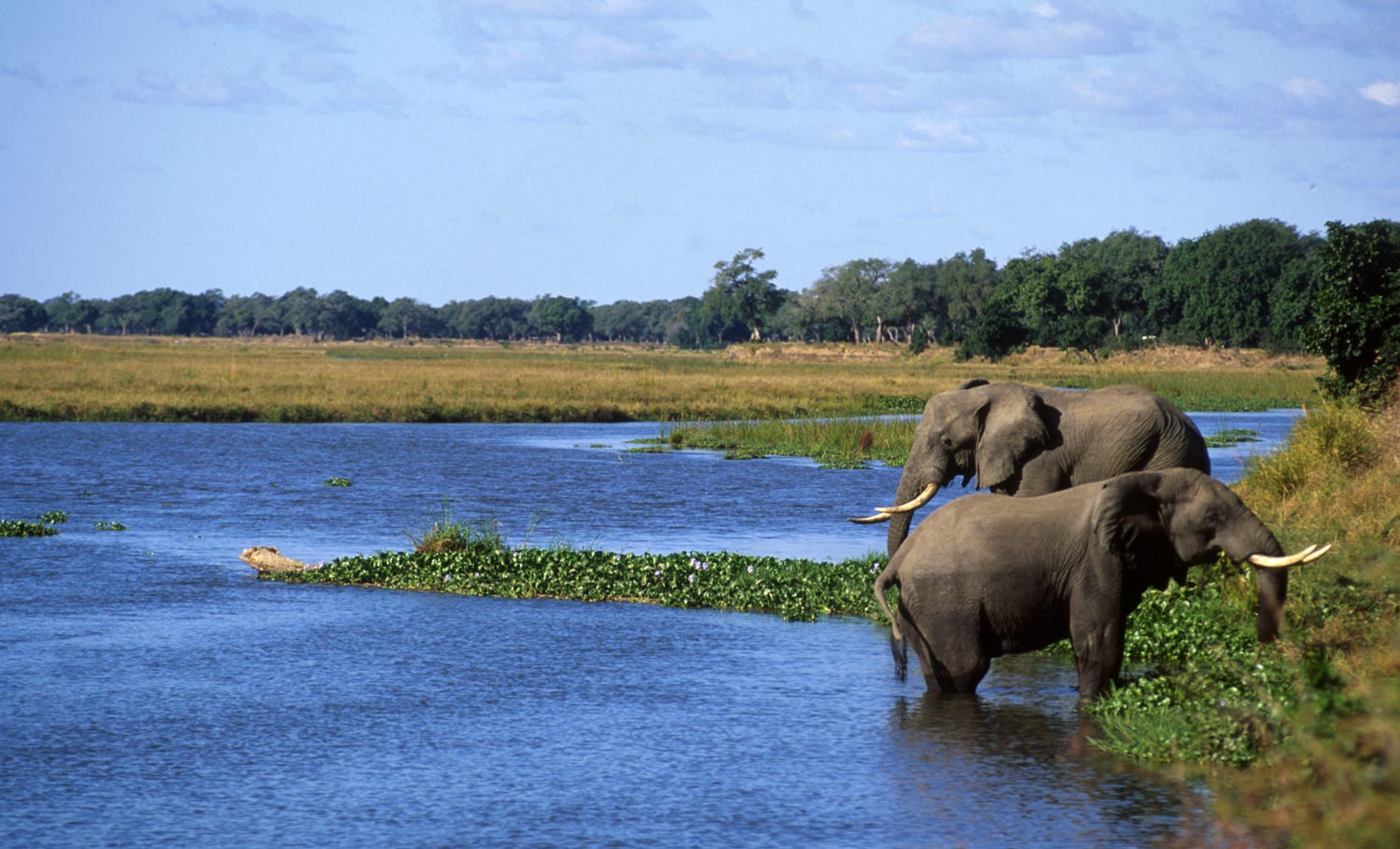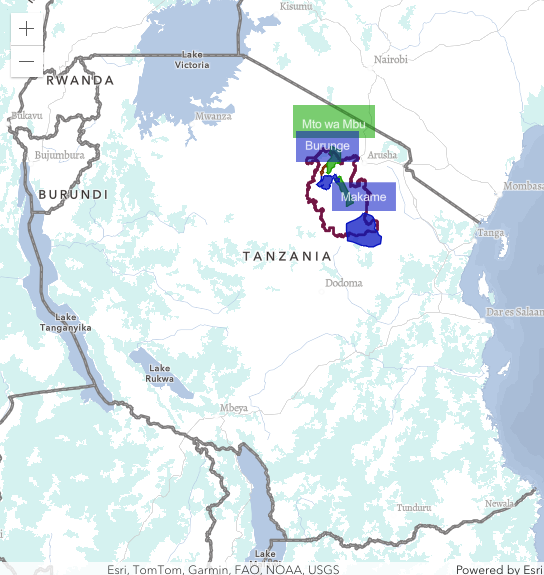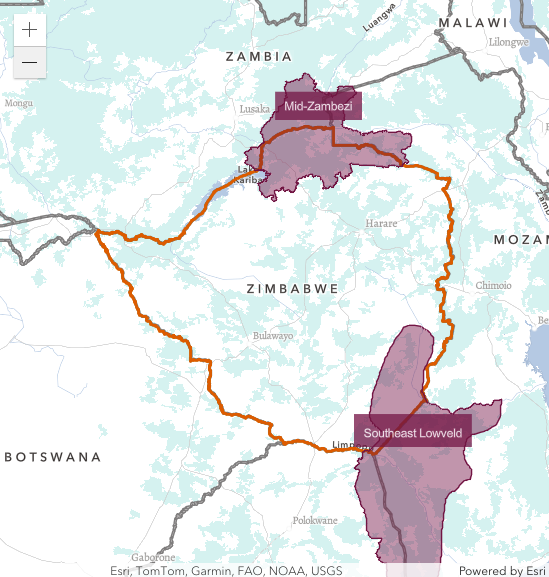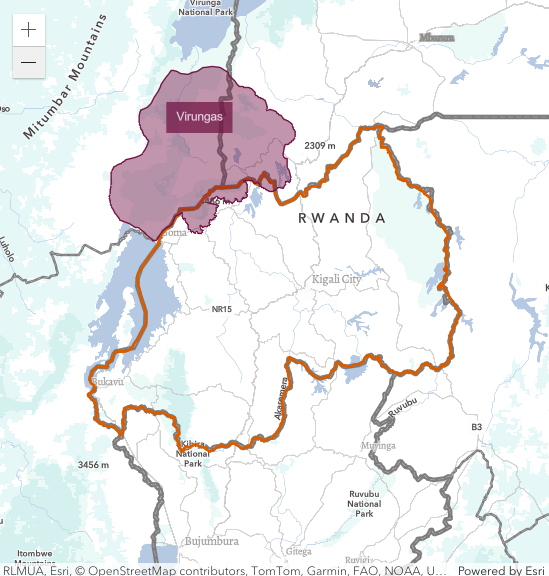Why Conservation Action Offers Hope Amidst Africa’s Biodiversity Crisis

Elephants in Zambezi river
Africa is extraordinarily biodiverse, hosting many iconic species and unique ecological phenomena that present the continent with great opportunities for sustainable development. However, Africa’s species, habitats, and ecosystems are increasingly under pressure from incompatible human activities. According to the International Union for the Conservation of Nature (IUCN), more than 45,300 species are threatened with extinction globally. This drastic decline poses a significant threat to millions of livelihoods, intensifies human-wildlife conflicts, and disrupts the ecological equilibrium of the continent. While there are many conservation efforts in Africa, their positive impact is not fully documented and shared broadly.
A recent study published in the journal Science reveals that conservation efforts can reverse or slow down biodiversity loss. This study, led by the conservation organization Re:wild, in collaboration with the universities of Oxford and Kent and the International Union for the Conservation of Nature (IUCN), analyzed 186 studies covering 665 trials of different conservation interventions globally over a century. The study found that conservation actions improved the state of biodiversity or slowed its decline in the majority of cases (66%) compared with no action. More importantly, it found that conservation interventions are highly effective when implemented correctly. Conservation action has prevented extinctions and reduced extinction risk for species across taxonomic groups compared with an absence of conservation action.
AWF’s Commitment to Conservation
Since its inception, the African Wildlife Foundation (AWF) has championed the preservation of Africa’s critical landscapes. AWF works to empower communities living alongside wildlife and habitats, including protected areas, and to inspire future conservation leaders, ensuring the African voice to protect Africa’s most endangered species and maintain biodiversity. AWF’s Chief Scientist, Philip Muruthi, reflects on the profound impact of AWF’s conservation efforts, emphasizing the inseparable link between sustainable development and conservation in Africa.
“At AWF, we believe sustainable development in Africa is unattainable without prioritizing conservation,” Dr. Muruthi asserts. “This includes aligning with sustainable development goals and visions like the African Union’s Vision 2063 and the Sustainable Development Goals (SDGs). These frameworks often assume that nature is thriving and that we have ample resources to meet our objectives, which is not always the case.”
Investment and Collaboration in Conservation
AWF champions the need for substantial investment in conservation, advocating for a harmonious approach that integrates development goals with environmental protection. This balanced strategy is critical for ensuring a sustainable future. “The key challenge lies in striking a balance between economic progress and safeguarding our natural world,” he acknowledges. “Encouragingly, the study published in Science provides evidence that conservation efforts are making a positive difference.”
Dr. Muruthi emphasizes the importance of amplifying these successes. “Showcasing these positive impacts in conservation is instrumental in building public confidence, securing ongoing support, and integrating with development objectives,” Philip explains. “This includes fostering collaboration with a diverse range of stakeholders, such as local communities, governments, and international partners.”
The Benefits of Conservation to Communities
“It’s not enough to simply focus on species recovery,” he continues. “We need to demonstrate how conservation directly benefits communities and overall human wellbeing.” He cites the work of AWF as an example. “Our initiatives, including eco-lodges, livelihood programs, and sustainable agriculture practices, not only empower individuals to meet their basic needs but also contribute significantly to long-term environmental health.” This approach ensures that conservation efforts are not only environmentally sustainable but also socially beneficial.
AWF’s Conservation Initiatives
Dr. Muruthi highlights AWF’s conservation initiatives, which have been crucial in salvaging endangered species, and emphasizes AWF’s holistic approach to conservation in the continent.

Manyara, Tanzania.
Manyara Ranch, Tanzania
One of AWF’s notable success stories is the recovery of Manyara Ranch in northern Tanzania, part of a critical wildlife corridor and habitat between Tarangire and Manyara National Parks. This landscape supports over 4,000 elephants and healthy populations of other species like giraffes. “We took on the transformation of Manyara around 2000-2001. It had been a run-down cattle ranch,” Dr. Muruthi explains. “We built a model with the local community that maintains the cattle operation, but the ranch is also now a habitat and connectivity success. We have recovered species like wild dogs, lions, elephants, and giraffes. We have shown that livestock and wildlife can coexist. Building local capacity, partnerships, managing the land and wildlife well, and demonstrating conservation business value are key.”
Middle Zambezi, Zimbabwe

Map of Mid-Zambezi, Zimbabwe
In Middle Zambezi, Zimbabwe, when AWF started working in 2014, nearly 100 elephants were being poached annually. “We formed a consortium with Zambia, Zimbabwe, and Mozambique for cross-border collaboration to recover the elephant population and conservation astride the Zambezi River,” Dr. Muruthi says. “In the last four years, no elephants have been poached. We implemented training, equipped, cross-border collaboration, established conservation in the corridor and dispersal areas, and continue to mitigate human-wildlife conflict.” As a result of these efforts, the elephant population is growing in the region. “We use innovative approaches, such as strategically growing chili to deter elephants. This chili is sold to the market, providing livelihood while keeping elephants away from farms – a double-win,” he explains.

Map of Virungas Landscape, Rwanda
Virungas, Rwanda
AWF has also played a crucial role in the recovery of the mountain gorilla population in the Greater Virunga landscape. “When I joined AWF in 1997, there were fewer than 600 mountain gorillas in the wild and their home had experienced political instability,” Dr. Muruthi recalls. “AWF has a long history in gorilla conservation. Recently, we were part of the International Gorilla Conservation Program, working with Rwanda, Uganda, and DRC, equipping rangers, and engaging communities. We built lodges that earn millions for the community. Thanks to this intervention working with partners, the mountain gorilla population has grown significantly.” As a result of AWF’s positive impact on gorilla conservation, the Rwandan government has recently engaged AWF to expand the habitat to host the increasing gorilla population comfortably and to benefit people. “These efforts are successful because we work with communities, realizing the potential of their resources and involving them in conservation enterprises,” he adds.
The Future of Conservation in Africa
AWF’s conservation success is multifaceted, including leadership development, with over 1,000 Africans trained and equipped, some of whom have become leaders in national wildlife/resource departments. Through various initiatives, AWF reaches more than 62,000 people annually through programs impacting enterprises and species conservation. In the last FY alone, 25,164 individuals in 4,194 households were directly reached with enterprises. For example, an average of 96% of the 30 populations of focal species are increasing due to AWF’s efforts.
Dr. Muruthi underscores that AWF implements people-centered conservation strategies that promote development, protect crucial wildlife habitats, and generate income for local communities and national economies. These sustainable initiatives help reduce pressure on wildlife, demonstrating the potential for conservation to deliver ecological and economic benefits.
AWF’s integrated approach sums this well into “Leading for Wildlife” – influencing Africans to make decisions that put conservation at the center of development; “Living for Wildlife” – restoring and securing ecosystems, promoting coexistence, and “Caring for Wildlife” – protecting at-risk species and habitats.
Looking ahead, he suggests that the future of conservation in Africa involves integrating environmental and natural resource considerations into national policies and development plans. This includes committing to global and regional conservation goals, broadly increasing protected areas through community involvement, and fostering private-sector participation.